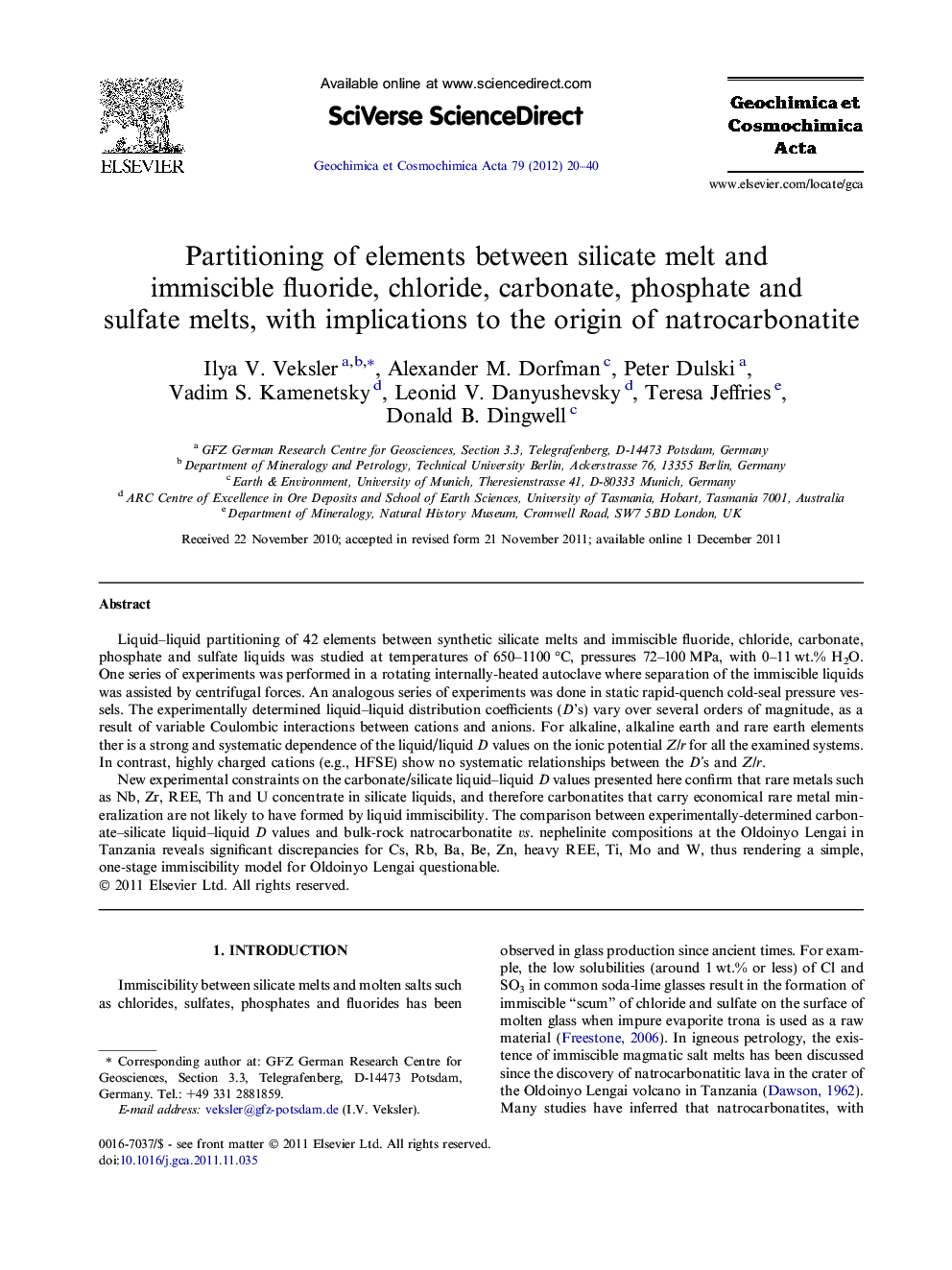| Article ID | Journal | Published Year | Pages | File Type |
|---|---|---|---|---|
| 4703039 | Geochimica et Cosmochimica Acta | 2012 | 21 Pages |
Liquid–liquid partitioning of 42 elements between synthetic silicate melts and immiscible fluoride, chloride, carbonate, phosphate and sulfate liquids was studied at temperatures of 650–1100 °C, pressures 72–100 MPa, with 0–11 wt.% H2O. One series of experiments was performed in a rotating internally-heated autoclave where separation of the immiscible liquids was assisted by centrifugal forces. An analogous series of experiments was done in static rapid-quench cold-seal pressure vessels. The experimentally determined liquid–liquid distribution coefficients (D’s) vary over several orders of magnitude, as a result of variable Coulombic interactions between cations and anions. For alkaline, alkaline earth and rare earth elements ther is a strong and systematic dependence of the liquid/liquid D values on the ionic potential Z/r for all the examined systems. In contrast, highly charged cations (e.g., HFSE) show no systematic relationships between the D’s and Z/r.New experimental constraints on the carbonate/silicate liquid–liquid D values presented here confirm that rare metals such as Nb, Zr, REE, Th and U concentrate in silicate liquids, and therefore carbonatites that carry economical rare metal mineralization are not likely to have formed by liquid immiscibility. The comparison between experimentally-determined carbonate–silicate liquid–liquid D values and bulk-rock natrocarbonatite vs. nephelinite compositions at the Oldoinyo Lengai in Tanzania reveals significant discrepancies for Cs, Rb, Ba, Be, Zn, heavy REE, Ti, Mo and W, thus rendering a simple, one-stage immiscibility model for Oldoinyo Lengai questionable.
